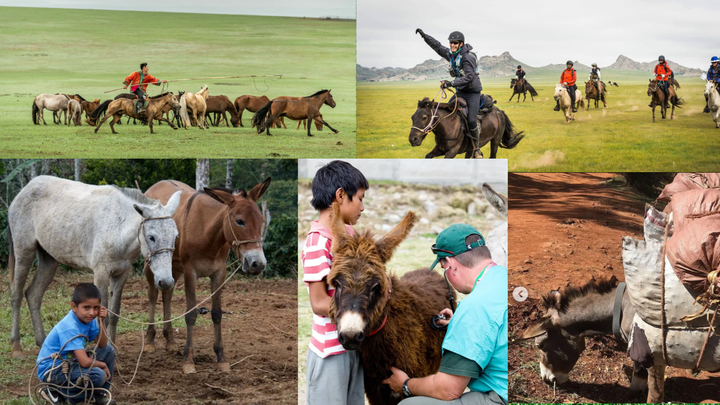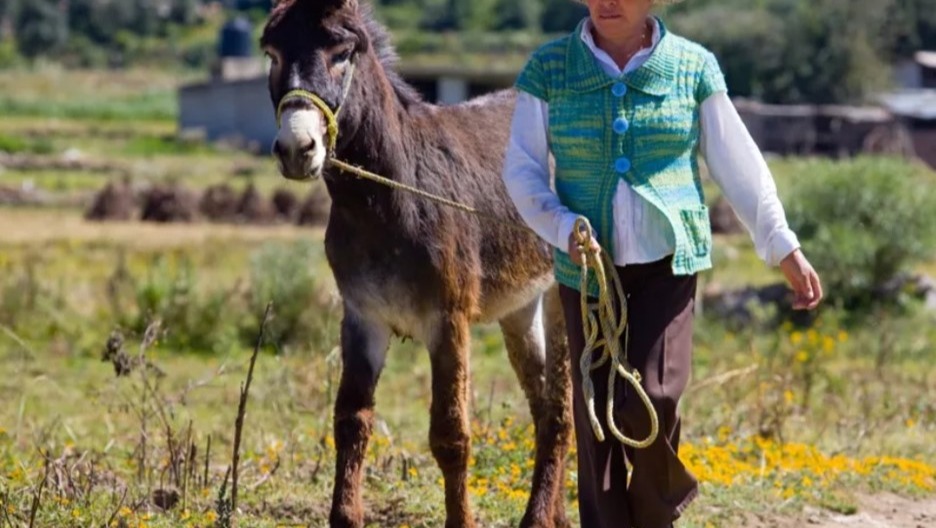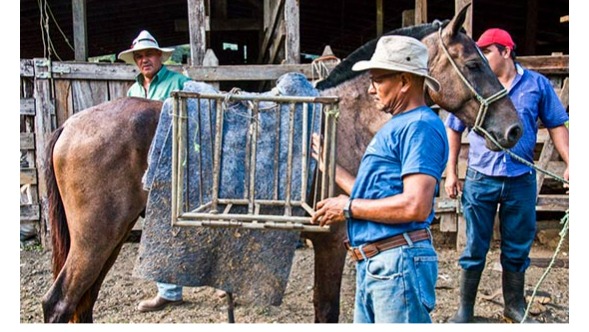
1000k Race To Improve The Lives Of Working Equines
Tax deductible
Thank you for all your generous support!
This race was incredible for me, and I have so much gratitude for the Mongolian horses that carried me over a total of 1270 kilometers across all kinds of rugged terrain.
Our fundraiser officially closses Saturday, September 3. [email redacted]ss for more race photos, behind-the-scenes videos, and updates on the work happening with Equitarian Initiative.
***********************************************************************************
Starting August 10th, I will be thundering across the Mongolian Steppe, covering 1000 wild km of grasslands, scenic vistas, and nomadic villages.
I will be undertaking this adventure with 44 other riders and will be partnering for 35-40km stints with about 35 tough plucky, just in from the range, native mongolian horses.
10 days of all day riding, with some rather interesting and foreboding food and drink as fuel.
This is the Mongol Derby, known as the longest and toughest horse race in the world, and after 3 years of waiting, from my first application sent in, with 2 years of canceled races for the pandemic, the time has finally come.

For me, there is more to this ride than the adventure.
I am riding to raise money for veterinary care for working equines around the world. Read on!
Why am I doing the Mongol Derby?
The easy answer is I love adventure, I love wide open spaces, I love riding horses, and I love experiencing new cultures.
The true answer is when I applied, 3 years ago, I was in a period of intense restlessness and change and needed something to pull my life forward.
Life is sweet, the time is now.
I am not sure if it was growing up on a farm, having many pets as a child, and becoming acquainted early with the passage of life and death of my beloved animal friends, or if it was the accidents I had in life, the first at 13, where I felt that death could be just a breath away.
Or perhaps the fact I have always been drawn to a good dose of adrenaline, one reason I started riding horses, then took up motorcycles, and love most activities with a healthy dose of risk.
However the knowing came for me, it is a part of me.
A deep knowing that tomorrow is never promised, for myself or for the ones I love.
Because of this, I believe in living, in always making space for the things I love, and for striving to be present and open hearted.
The Mongol Derby holds many things that I love.
Adventure. Open spaces. New people and culture. And of course, Horses.

Thinking of 10 days of wild open country, with nothing more to do than ride, think, and convince about 35 tough native horses that I am worthy of being carried… it makes my heart sing.
As big challenges often do, it has (and still is) guiding me on new paths.
About the Derby
The Mongol Derby is known as the longest and toughest horse race in the world, recreating the world’s first long distance postal transmission system.
This system was set up in 1224 by Chinggis Khaan, and using a massive network of horse stations – ‘morin urtuus’ in Mongolian – his hardy messengers could gallop from Kharkhorin to the Caspian sea in a number of days.
For ten days each August, the Mongol Derby recreates this legendary route, building a network of urtuus at 35km intervals along the entire thousand kilometer course.
The horses are the backbone of this event, descendants of their ancestors who carried the all-conquering Mongol warriors across half the world. “Diminutive, sturdy, fearless, wild, and unbelievably tough, they are revered in Mongolian culture, and have changed very little over the centuries, remaining essentially free from human interference.

Of the three million horses inhabiting the vast Mongolian steppe, the great majority of them live in huge quasi-feral herds. They live, eat, and die here having to survive temperature extremes from minus 40 degrees Celsius in winter to plus 30 in the summer. They eat grass and little else, drink water as they find it, and are rarely given any nutritional extras by their human compatriots.
In spite, and also because of this, Mongolia remains one of the last places on earth where the relationship between man and horse is symbiotic. To the nomadic Mongolians living on the steppe, the horses are an integral part of their social culture.
“A Mongol without a horse is like a bird without wings.”
The male horses are used for transportation, racing, and occasionally, meat. The mares are rarely ridden but are used for milk (up to six times a day in summer) and breeding. Most of the horses are ‘owned’ by a herder or family and branded appropriately, being brought in a few times a day in a similar way to cattle being herded.
The horses tend to seek out the same grazing places during the seasons so the Mongolians (most of the time) know where to find them. They usually stay within 10kms; herding takes a few hours, and is sometimes just performed with a team of two riders. Once brought in, at the family ‘ger’ (dwelling), the horses are either put in a pen or tied to a line whilst milking takes place or horses are used for work.”
This is where we Derby riders come in.
For the 10 days of the Derby, we will have the honor of riding these horses as we progress from urtuu to urtuu.
In honor of these working horses, I want my part in this race to make a difference for working horses around the globe, in countries where veterinary knowledge and care is very limited.
And that’s why I am riding to support Equitarian Initiative.
About Equitarian Initiative
Over 100 Million people rely on working horses, donkeys, and mules for family survival.
There are approximately 100 million working equids in the world, representing 90% of the world’s horse population. They are essential for trade, commerce, transportation, and subsistence agriculture.

The ownership of a working equid means a family can generate a livelihood or a child can access an education or medical attention. Communities worldwide rely on these hard-working animals.
Very few families have the resources for veterinary treatment. We work with communities to ensure these animals get the care they need.
From our clothes to our coffee to our coconut water, we are all benefitting from the hard work of these beautiful animals. Working equids play an integral role in our own consumerism, carrying the raw ingredients for products we later buy from field to market. Our consumerism literally rests on their backs!
Supporting the Equitarian Initiative allows you to practice responsible consumption and advocate for the welfare of animals. But it’s not only that. The families that own and care for these beasts of burden suffer economically when their animals are not well and cannot work.
By facilitating the mission of Equitarian Initiative, you support not only the health of working equids but also the health of the families that depend on them
You can also visit their website here: https://equitarianinitiative.org/





Help horses, mules, and donkeys like the ones in the photos above by giving to Equitarian Initiative.
I am riding specifically to raise $10,000 to cover a new education program for local schools in the countries that Equitarian Initiative serves.
Here are the ways you can give as I ride.
- Give $35 (a dollar for each horse I will ride)
- Give $100 (for the number of kilometers in where I will already be very tired!)
- Give $1000 (a dollar for each kilometer of the race)
- Give whatever you can! Even a dollar can cover the cost of a clean syringe to give much needed antibiotics to an animal suffering from infection!
As a way to contribute even more we have set up a 10 year anniversary sale on HorseClass.com with 10% of ALL sales going to Equitarian Initiative. Visit us here to see the sale.
Organizer
Callie King
Organizer
Honey Brook, PA
EQUITARIAN INITIATIVE
Beneficiary